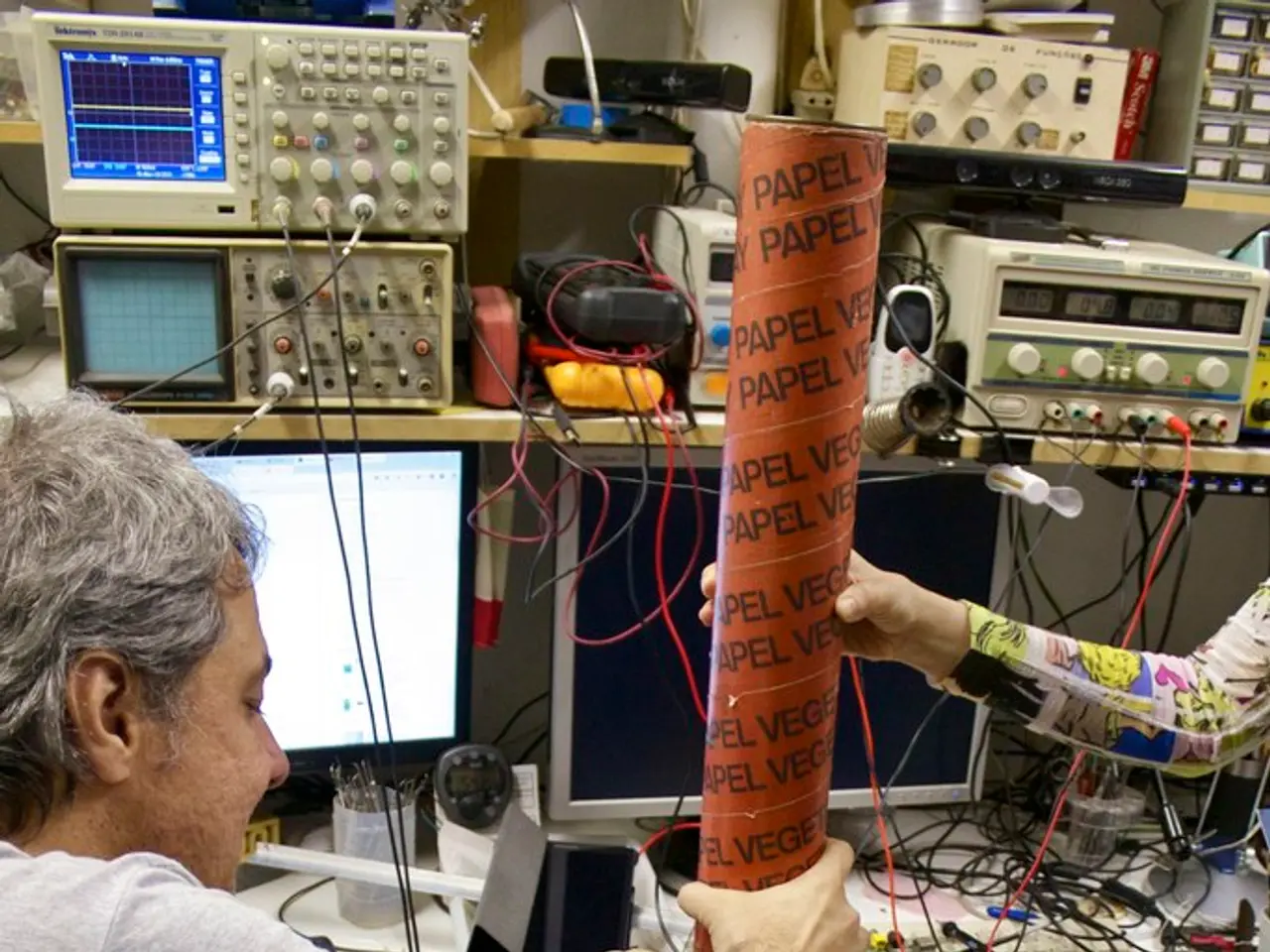Brain, heart, and eye monitoring during six cognitive tasks to evaluate mental workload using six biomedical approaches
In a groundbreaking study, researchers have developed a comprehensive comparison of six brain-body measures for evaluating mental workload in complex training and work environments. This innovative approach could potentially lead to the creation of more adaptive and efficient human-machine interactions.
The study, which involved 23 participants, represents the first comprehensive comparison of these measures across multiple days and cognitive domains. The research team employed two distinct modalities for brain activity (EEG and fNIRS) and ocular activity (EOG and eye-tracking), as well as two modalities for cardiac activity (ECG and PPG).
The findings suggest several key implications:
1. **Diverse Measures Capture Different Aspects of Mental Workload**: The study underscores that no single measure fully quantifies cognitive states like mental workload. Instead, multiple brain and physiological indicators offer complementary insights. These include neuroimaging measures such as EEG (electroencephalography) and fNIRS (functional near-infrared spectroscopy), which assess brain activity directly, alongside physiological signals such as heart rate (ECG), skin conductance (EDA), eye-tracking, body temperature, and electromyography (EMG) that reflect autonomic nervous system changes.
2. **Objective Continuous Monitoring Needed Beyond Subjective Assessments**: Traditional subjective methods, like the NASA-TLX questionnaire or other self-report scales, are widely used but have limitations. They are applied after tasks and rely on participant perception, which can be biased or delayed. The integration of physiological and neuroimaging data allows real-time, objective, and continuous monitoring of mental workload during complex and dynamic tasks.
3. **Brain-Body Measures React Differently to Workload Types and Levels**: The study notes that different measures respond variably depending on the nature and intensity of cognitive and physical task demands. For example, heart rate and skin conductance may show sensitivity to physical exertion, while EEG/fNIRS more directly reflect mental effort. This suggests that a multimodal approach combining these measures enhances accuracy in assessing workload in realistic settings.
4. **Implications for Training and Work Environments**: Understanding mental workload through these integrated measures can improve training design and workplace monitoring by preventing cognitive overload and fatigue, tailoring interventions such as brain endurance training, and enhancing safety, performance, and well-being in environments requiring sustained attention and complex decision-making.
5. **Potential for Application in Real-Time Adaptive Systems**: The findings support the development of adaptive systems that can adjust task difficulty or provide breaks based on physiological and neuroimaging feedback, potentially improving productivity and reducing errors in high-stakes environments.
In summary, the study underlines the importance of a multimodal brain-body measurement approach to objectively evaluate mental workload, particularly in demanding training and work contexts. It shows that leveraging these diverse indicators can enable proactive management of cognitive load, improving both performance and mental health outcomes.
The study developed a new six-cognitive-domain task protocol, coupled with six biomedical monitoring modalities, and conducted four sessions over a period of 4 weeks using neuroergonomic approaches based on measures of human body and brain activity. The results showed varying levels of sensitivity to workload within each modality, and comprehensive neuroergonomic assessment can inform the development of next-generation neuroadaptive interfaces.
[1] Reference 1 [2] Reference 2 [3] Reference 3
- This study, employing diverse measures like EEG, fNIRS, ECG, PPG, eye-tracking, and electromyography, highlights the potential for advancements in health-and-wellness, specifically mental-health, owing to therapies-and-treatments that leverage technology for real-time, objective monitoring of mental workload.
- The integration of neuroimaging techniques and physiological signals in this research paves the way for technology-driven solutions in science, potentially leading to the creation of adaptive systems that can better cater to working environments, enhancing both efficiency and mental health.




